Trying to navigate French supermarkets? Wondering how to find the best food in Paris without getting ripped off? You’re not alone.
Real French food shopping isn’t about buying €32 foie gras from a luxury food hall. It’s about knowing the rhythm of the streets, spotting the signs of a good market, and shopping like a local—fresh, frequent, and fuss-free. In this guide, we’ll show you how to shop for food in Paris like a French chef: from supermarket survival tips to where real Parisians go for produce, cheese, and wine. Plus, we’ll reveal why markets and local artisans are still the best-kept secret to eating well in Paris.
Table of Contents

The Art of the French Food Shop
In France, shopping for food isn’t a chore—it’s a ritual. It’s part of the daily rhythm, as fundamental to French life as a morning coffee or a cheeky afternoon glass of wine. As a chef, I’ve learned that great cooking starts at the source. It’s not about chasing unicorn ingredients or blowing your budget at fancy food halls. It’s about knowing where to look, what to ask, and how to shop like the locals.
And that’s exactly what this post is here to help you with. Whether you’re visiting for a weekend or living here long-term, I’ll share the inside tricks and truths of shopping for food in Paris—how to get good service, where to find real value, and why markets matter more than menus. You won’t need to grow your own strawberries or chase mythical potatoes—I’ll help you find the good stuff without getting ripped off.
So grab your tote bag, your curiosity, and maybe a baguette (just not that baguette—we’ll get to that), and let’s go shopping like a chef.
Click here for all the tantalising inspiration you need for gifts to take home or foodies souvenirs from Paris.
Get Lost With Me
Find the real Paris.
Explore my easy to use ever evolving map of approved spots.
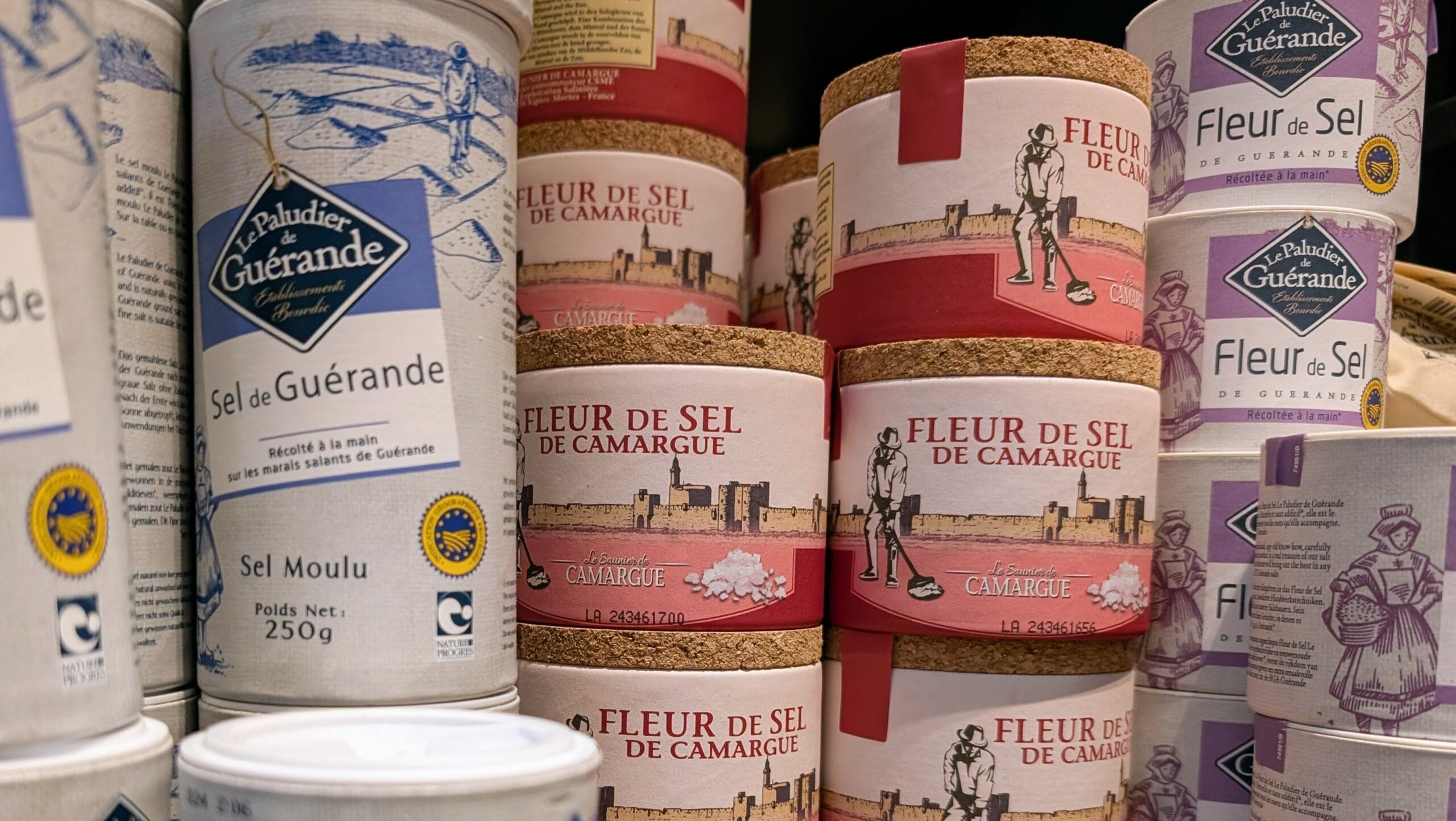
French Supermarket Survival Tips
Let’s be honest—supermarkets aren’t sexy. But in Paris, they’re a necessary evil, even for chefs. Whether you’re popping in for a bottle of wine or restocking your fridge, knowing how to navigate these spaces can save you from both embarrassment and overspending.
First up: Bring your own bag—or get ready to cough up for a flimsy paper one. French supermarkets rarely offer free bags—a result of environmental laws introduced in 2016 to reduce plastic waste, and they’re not subtle about their distaste for waste. You will also find that most fruit and veg is not wrapped in plastic due to these same environmental laws. Don’t be surprised to see things displayed in the open air, and do make sure you wash it thoroughly before eating.
Weigh your produce. Most smaller supermarkets still expect you to weigh fruits and veg yourself at a scale nearby, and then print a sticker to slap on the bag. Miss that step, and you’ll be met with a shrug and a sigh at checkout, if not sent back to do it properly.
Now, let’s talk labels. If you see “Bio,” that means organic (though French organic standards aren’t always perfect). AOP? That’s the good stuff—Appellation d’Origine Protégée, meaning the product is protected by strict origin and quality standards. When in doubt, look for Reflets de France, a house brand owned by Carrefour that offers great traditional French products at reasonable prices.
- Here’s a quick cheat sheet to help you shop smarter:
- Franprix – Moderate pricing, ultra-convenient. Good for milk, everyday essentials and an emergency snack. Small footprint means smaller selection.
- Owned by the Casino Group (who also own Monoprix and Le Petit Casino), Franprix has over 300 stores across Paris.
- Fun fact: all Franprix produce deliveries into central Paris arrive by barge on the Seine—a sustainability effort that helps keep trucks off the city’s crowded streets. Next time you’re walking the quays, those shipping containers you see? That’s dinner arriving.
- Carrefour – One of France’s biggest supermarket groups with stores in almost every corner of the city—but not all Carrefour stores are created equal.
- Carrefour City / Carrefour Express – These smaller, centrally located stores are all about convenience. You’ll find ready-to-eat meals, wine, and the basics, but the selection is often painfully limited and the prices notably higher than their suburban counterparts. Great in a pinch, but not ideal for a big food shop.
- Carrefour Market / Hypermarkets – Head just a little outside the center to find the real gems. Larger stores like the Carrefour at Porte d’Auteuil have far more variety and much better prices. You’ll find everything from butcher counters to fresh produce, often with local options and a better selection of affordable, high-quality goods.
- Look out for Reflets de France, Carrefour’s in-house brand offering classic regional French products—great value for genuinely good quality.
- Monoprix – One of the best-looking and most spacious stores in central Paris. It offers a more luxurious shopping experience and often serves as a one-stop shop for groceries, clothes, and home goods. Prices are on the higher side, but the experience and quality can justify the splurge for many locals.
- Auchan – A hypermarket option that’s beloved by chefs and locals alike. The Auchan at Issy-les-Trois-Moulins is particularly huge—large selection, proper butcher counters and better prices than anything you’ll find in central Paris. While there are smaller Auchans dotted across the city, it’s when you reach the edges of Paris or just beyond that the stores really shine in terms of variety, price, and practicality. Well worth the trip for a full shop. Whether you’re stocking up or grabbing just enough to last until tomorrow’s market stroll, knowing the terrain of Paris’s supermarket scene is half the battle.
- Lidl/Aldi – Found mostly in the suburbs, these no-frills stores offer incredible value. If you’re on a tight budget and don’t mind the bus or Métro ride, it’s well worth the journey for basic staples and surprisingly decent quality.
- Mon Marché – Online delivery with high-end produce. Perfect if you’ve got money, no time, and a Parisian postcode. (Use my code CHEFREVILL for €50 off your first order.) Whether you’re stocking up or grabbing just enough to last until tomorrow’s market stroll, knowing the terrain of Paris’s supermarket scene is half the battle. mon-marche.fr
- Franprix – Moderate pricing, ultra-convenient. Good for milk, everyday essentials and an emergency snack. Small footprint means smaller selection.
But here’s the real secret: supermarkets aren’t where the magic happens. If you want better ingredients, better service, and a better shopping experience, skip the fluorescent lighting and head to the markets and local artisans. The produce is fresher, the quality is higher, and every euro you spend supports real people and real food culture.
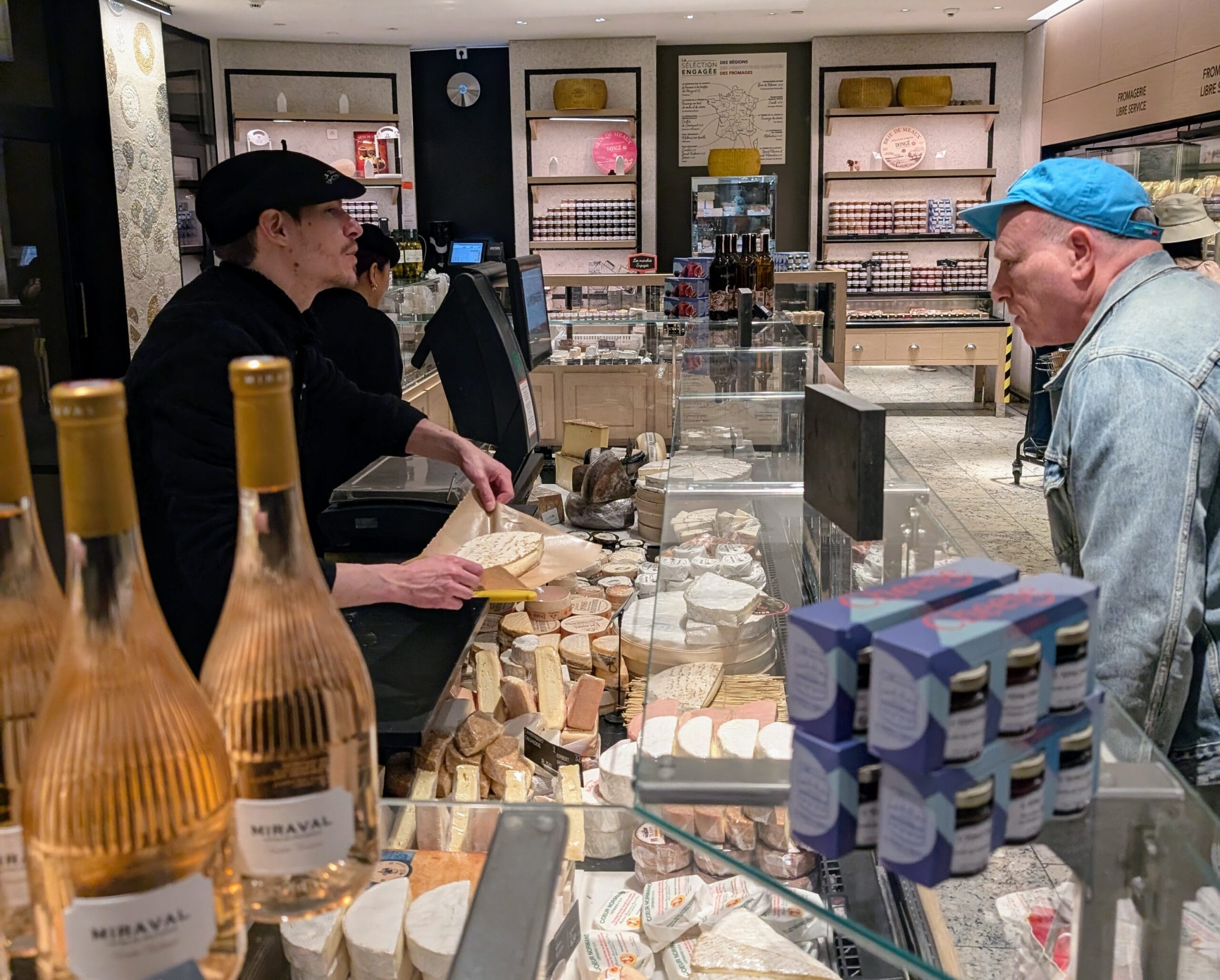
The French Customer Service Secret
Let’s get one thing straight: French customer service isn’t bad—it’s just not American. It’s not transactional, it’s relational. In France, especially in food shops, service is familial. That means it’s built over time, based on respect, routine, and shared ritual.
So what does that look like in real life?
First, say “bonjour”—every single time you walk into a shop. Say it to the butcher, the cheesemonger, the woman behind the till. If you don’t, you’re essentially announcing, “I don’t understand how things work here.” Want better service? Start with a smile and that one magic word.
Second, become a regular. In Paris, loyalty isn’t earned with punch cards—it’s earned with presence. You don’t have to chat about your weekend plans or know your fishmonger’s birthday. Just show up. Frequently. Once they recognize your face, you’ll start getting the good bits. The hidden cheeses. The fresher cuts. The honest recommendations.
Finally, match their energy. Don’t expect chirpy small talk or sales pitches. Instead, expect attentiveness, expertise, and the occasional side-eye if you fumble your order. That’s part of the charm. And yes, sometimes it takes a few visits to crack a smile—but when you do? You’re in..
Shopping Like a Chef (Without Getting Ripped Off)
In France, many specialty food shops have names that reflect the exact role they play in the food chain. Understanding these signs can help you shop smarter and find the freshest produce and highest-quality ingredients.
- Primeur – A produce seller who buys fruits and vegetables from wholesale markets like Rungis. The selection is often broad and good-quality, though not always strictly local.
- Maraîcher – A greengrocer who sells produce they grow themselves or source directly from local farms. This is your go-to for hyper-seasonal, farm-fresh veg.
- Boucher – A butcher, typically selling beef, pork, and lamb.
- Charcutier – Specialises in cured meats, pâtés, terrines, and sausages.
- Volaille / Volailler – Poultry specialist, often selling chicken, duck, and rabbit.
- Fromager – Cheesemonger, often with affinage expertise (meaning they age the cheeses themselves).
- Poissonnier – Fishmonger, best visited in the mornings for the freshest catch.
Now, here’s where things get interesting: Parisian kitchens are small, and the fridges even smaller. Daily or near-daily shopping isn’t just a charming custom—it’s a logistical necessity. This frequency shapes how Parisians cook: fresh, seasonal, and in tune with their neighbourhood.
Market streets and specialist shops aren’t touristy—they’re a crucial part of daily life. People stop by the butcher, the baker, the cheesemonger not out of nostalgia, but because that’s how food works best here. Parisians support these places not only for the quality and service, but because they want them to stick around. They are a part of their lives, their rituals, their community.
Yes, they may cost more than the supermarkets, but they give back in spades: expert advice, personal service, and ingredients that actually taste like something.
Want to dive deeper into Parisian bread culture? Stay tuned for our upcoming post on choosing the best local bakery like a true Boulonnais. We’ll decode signage, talk dough, and help you avoid overpriced imitations.
Chef’s golden rules:
- Buy fresh. Buy local. Buy with curiosity.
- Quality over quantity—every time.
- Labels to know: Bio = organic, AOP = protected origin.
- Cheese and wine hacks:
- Ask for tastings at fromageries
- Start with staples like Comté or Saint-Nectaire
- Look for value in Côtes-du-Rhône or Pays d’Oc wines
If the idea of shopping outdoors sounds like a hassle, let me assure you: once you’ve had a ripe fig handed to you by someone who grew it, or watched your kid munch on strawberries with dirt still on them, you won’t look at shrink-wrapped produce the same way again.
Read our list of recommended Paris souvenirs for foodies for more amazing treats to take home.
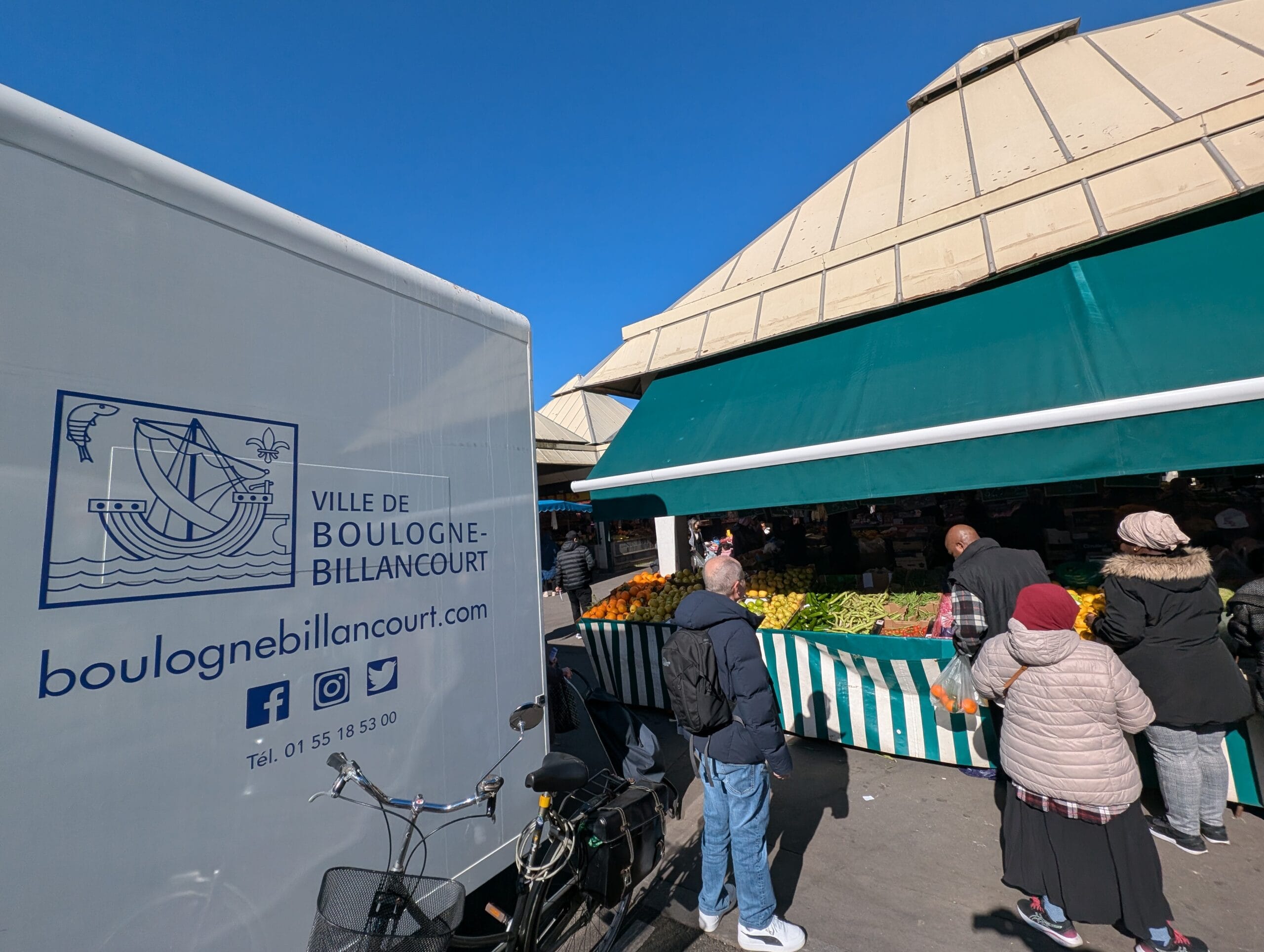
Don’t Skip the Market (Even If You’re Busy)
Look, I get it. You’re tired, it’s raining, and there’s a Franprix on the corner whispering sweet nothings about pre-cut veg and microwave risotto. But if you really want to eat like the French—and like a chef—you’ve got to get yourself to the market.
Why? Because market produce blows supermarket produce out of the water. It’s seasonal, local, fresher, and often cheaper. It’s also where the magic happens: real conversations, real connections, and ingredients with real flavour. That tomato? It didn’t fly in from the other side of the planet. It probably came from a farm a few hours away, picked yesterday.
Markets are built into the fabric of French life. They’re not just places to shop—they’re part of the weekly ritual, like catching up with your favourite fishmonger or grabbing a warm roast chicken from the rotisserie stand. They’re also where chefs stock up for serious cooking.
A few tips to help you blend in:
- Say bonjour to each vendor. Always.
- Don’t touch the produce unless invited. Point and smile works wonders.
- Bring cash—and a tote bag (or three).
- Go early for the best selection, or go late for the best deals.
If you need a crash course, I’ve got you covered:
If the idea of shopping outdoors sounds like a hassle, let me assure you: once you’ve had a ripe fig handed to you by someone who grew it, or watched your kid munch on strawberries with dirt still on them, you won’t look at shrink-wrapped produce the same way again.
Cooking in Your Pied-à-Terre
So you’ve braved the markets, filled your tote bag, and your fridge is now packed tighter than a Métro at rush hour—what now?
First of all, relax. You don’t need a chef’s kitchen to eat like a French god. Most Parisian rentals have the bare minimum: a hob that pretends to boil water, one pan that’s seen better days, and a fridge the size of a suitcase. But that’s enough. Good ingredients don’t need fuss—they need heat, salt, and a bit of love.
Here’s your basic toolkit:
- One solid frying pan
- A small pot for boiling or sauces
- A decent knife (bring your own if you’re picky)
- A chopping board (preferably one that doesn’t smell like onions from three tenants ago)
And your go-to lazy-chef-approved recipes?
- Omelette fines herbes – Elegant, easy, and a fridge-clearer.
- Dijon mustard chicken – A spoonful of mustard, a dash of cream, job done.
- Tartines – Open-faced sandwiches dressed like they’re going to a dinner party.
Pro tip: don’t sleep on Picard. Yes, it’s frozen food—but not like you know it. Think escargots ready to go, frozen ratatouille, and brilliant puff pastry. It’s a Parisian secret weapon for last-minute dinner parties and too-tired-to-cook nights.
Cooking in Paris isn’t about showing off—it’s about making the most of what you have, which, in this city, is always something good.
Shopping with Kids? You’re Not Alone.
If you’ve got little ones in tow, don’t stress—French parents shop with kids all the time. No one’s judging your toddler’s meltdown in the cheese aisle (well, maybe a little, but that’s just Paris). The French are used to seeing kids in markets, supermarkets, and bakeries—sometimes shouting, sometimes nibbling on a piece of bread just to stay upright.
Pro move: stop at the bakery first. Grab a pain au chocolat or croissant aux amandes and hand it over like currency. Bribery? Maybe. Effective? Absolutely. It buys you just enough time to get through a produce stall or two without chaos.
Many market vendors are surprisingly kid-friendly, too. Some will hand over a cherry or slice of peach for tasting, especially if your child looks curious or adorable. It’s all part of building that early relationship with food.
For more on navigating Paris with little mouths to feed, check out my Paris Food Guide for Families. It’s got all the practical bits—where to eat, what to pack, and how to avoid hangry meltdowns (yours or your kid’s).
Final Chef Tips & Truth Bombs
Let’s finish with a few home truths—no frills, no filters.
- The closer you are to the centre of Paris, the more expensive everything becomes. In the single-digit arrondissements, prices are inflated and product range shrinks. You’re paying for postcode, not produce.
- The suburbs are where chefs actually shop. Big-name stores like Auchan at Issy-les-Trois-Moulins or Carrefour at Porte d’Auteuil offer space, proper butcher counters, good value, and a wider variety of products. They’re well-connected to transport, and you can do a big shop without paying tourist prices.
- Last-mile logistics matter. If you’re doing a weekly shop, plan ahead. You might not want to haul kilos of groceries on the Métro, but a quick ride to a better-stocked store can save you time, money, and stress.
- Luxury doesn’t equal quality. Le Bon Marché and other glossy gourmet temples are often used as shorthand for “the best,” but let’s be real—they’re curated for the mega-rich. The produce is fine, but so is the markup. Do you want a €20 jar of mustard or the real deal from a producer at your market?
- We’re not saying don’t go. In fact, go! Take photos, soak it in, compare prices. Then come home and make something better with what you found at a fraction of the cost.
- Support real food culture. Buy direct when you can. Talk to your cheesemonger. Trust your nose in the market.
- Skip the tourist shops. Nobody buys decent cheese at the Eiffel Tower. Ask locals where they go—and go there.
- Use your words. Even a bit of French goes a long way. A well-timed “bonjour” or “c’est tout, merci” will earn you more than any guidebook ever could.
Real Food Is Found on the Streets, Not in the Aisles
Here’s the truth no guidebook tells you: the best meals in Paris don’t start in a kitchen—they start at the market. They start with a chat at the cheese counter, a spontaneous seasonal buy from a local grower, or a free tasting of saucisson you didn’t know you needed.
Shopping like a chef isn’t about spending more—it’s about spending smarter. It’s about knowing when to hit the supermarket and when to detour down a cobbled street to your neighbourhood butcher. It’s understanding that food is not just what’s on the plate, but the entire experience that brings it there.
So support the small guys. Explore. Taste everything.
💬 Got a favourite Paris market or a food shopping fail you’ll never forget? Share it in the comments—we’re all still learning (and eating).
📚 Want more real-food advice? Check out the blog’s other guides and join the mailing list for the freshest bites straight to your inbox.
Bon appétit, and happy shopping.
Love this? Get more real, unfiltered food stories straight to your inbox. No fluff, no spam—just damn good food writing and all for free!

From the bustling streets of Paris to the heat of a professional kitchen, my life has always revolved around food. A Brit who moved to France at 16, I trained as a chef in a Parisian palace kitchen at 18 and have spent decades cooking, eating, and living like the French.
By day, I run kitchens and events, but Eat Like The French is my side hustle—a way to share my passion for French food through writing and food tours. After a detour into tech recruitment, I returned to what I love most: cooking and storytelling—one dish, one tour, and one bite at a time.
🛒 Paris Food Shopping FAQ
Where do locals buy groceries in Paris?
Locals often mix it up: they grab essentials at Franprix or Carrefour City, but do their real food shopping at open-air markets, independent shops, and suburban hypermarkets like Auchan and Carrefour Market.
What’s the difference between a primeur and a maraîcher?
A primeur buys produce wholesale (often from Rungis), while a maraîcher grows or sources directly from local farms. If you want seasonal and ultra-fresh, go for the maraîcher.
Is it cheaper to shop at a French market or a supermarket?
Markets can actually be cheaper—especially for fruit, veg, and seasonal items. Supermarkets win on packaged goods and convenience, but the quality often doesn’t compare.
Can tourists shop at Paris markets?
Absolutely! Markets are open to everyone—just be polite, say “bonjour,” and follow local etiquette (like not grabbing produce without asking).
What is Reflets de France?
It’s a private label owned by Carrefour that showcases regional French specialties. It’s surprisingly good quality and often OK value.
What should I avoid when food shopping in Paris?
Avoid tourist-focused food shops in the city center (we’re looking at you, Eiffel Tower cheese shops) and convenience stores in major stations—they’re overpriced and underwhelming.
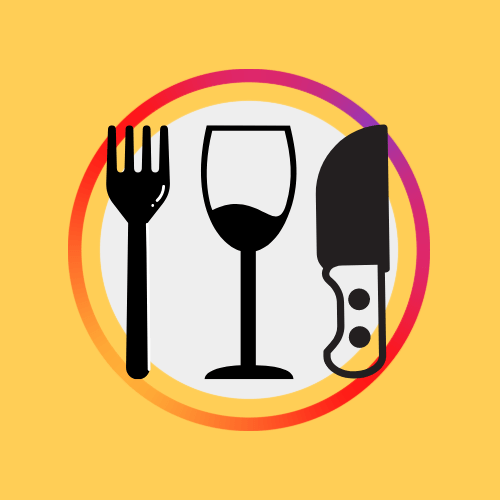
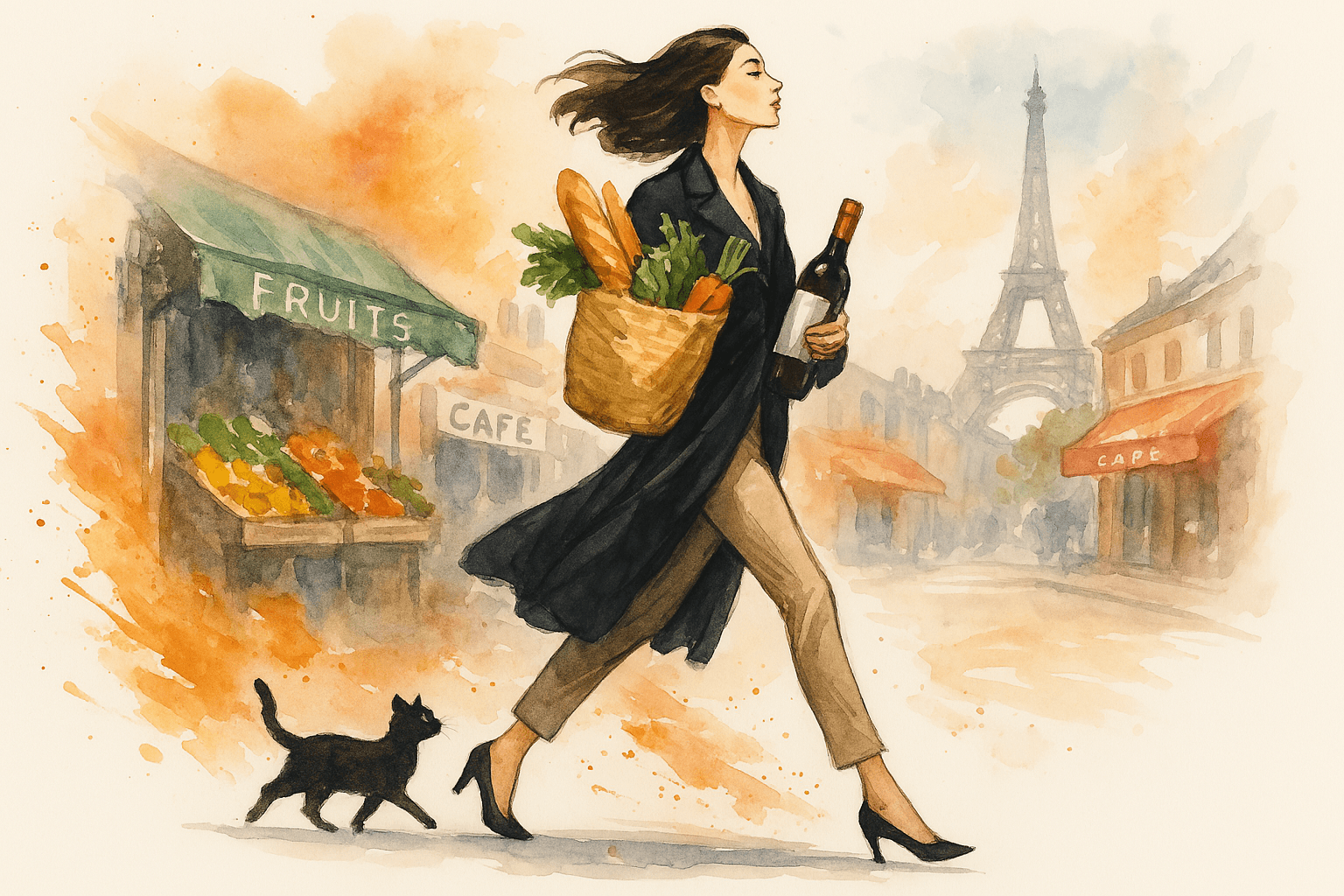
Yep, shopping every day is the only way. Cheese will keep a few days, but bread and vegetables and fruit are best bought in the morning, and a baguette on the way home.
I’m told french women used to shop twice a day for food, though that was in the 1960s – it seems a bit excessive nowadays.
I am the food obsessive that shops twice a day for bread and can often go to the shops three or four times.
It does help that I love hanging out in my market or with the owner of my local corner store.